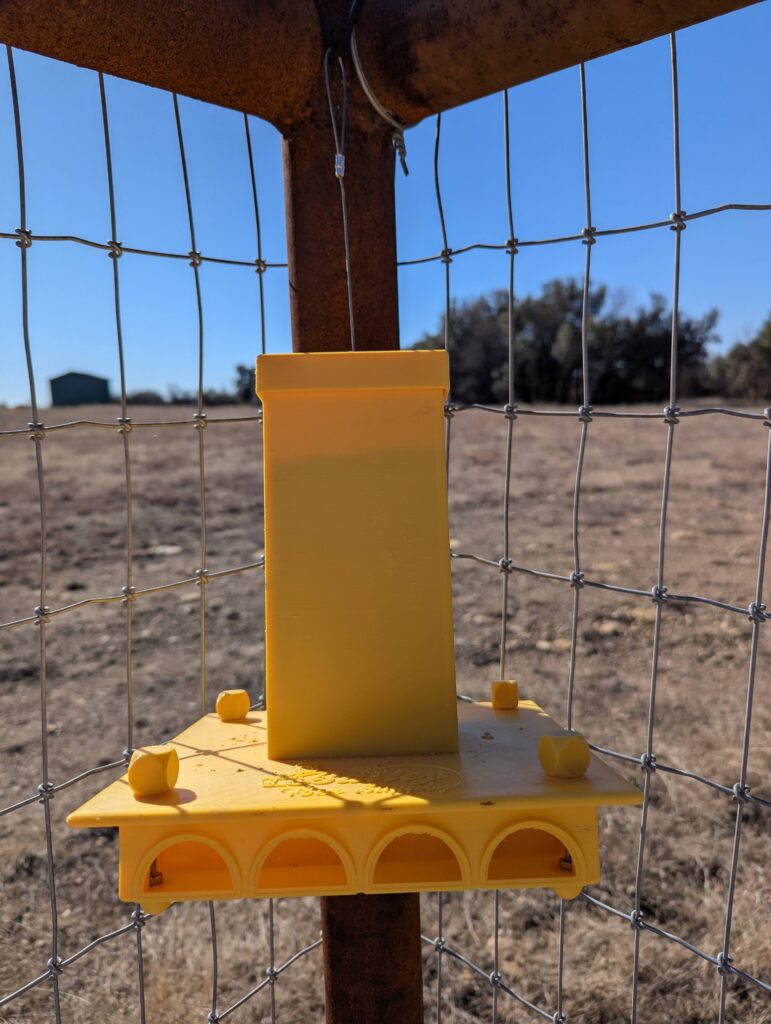
In addition to supplemental feeding our hives with bee syrup during the winter months, we’ve added dry pollen feeders to our apiary (see above photo).
Why separate pollen feeders?
The alternative would be to risk getting the bees too cold by opening the hives to add pollen patties.
As the afternoon temperatures rise into the high 40s and low 50s, the worker bees come out to forage. Unfortunately, in the months of December, January, and February there’s not much blooming for them.
And for some reason, bees don’t fight each other as they collect pollen from the dry feeders. In contrast, if we put out buckets of bee syrup for group feeding, there’d be chaos as they fought each other over the food supplies. That’s why the bee syrup is distributed via secured top feeders on each hive.
Now we’ve seeded the past two years with plenty of bee-friendly wildflower varieties. Let’s hope some bloom early in February so the bees can get a jump start on building up their hives and creating some more great Texas wildflower honey to harvest.
